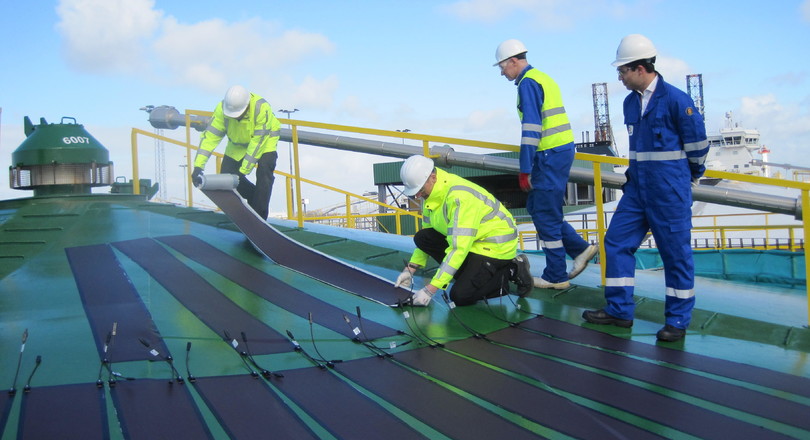It placed solar foil on the roof of one of the storage tanks in Vlaardingen this week.
Arnhem, march 28th 2019
It placed solar foil on the roof of one of the oil storage tanks in Vlaardingen this week.
It is initially a trial, says Khalid Saleh, energy coordinator at Vopak, which must show the yield of the solar cells. It must also be determined whether the film, which is glued to the storage tank, remains adhered to the roof in all weather conditions.
Edible oil
For the test, Vopak selected a storage tank for edible oils. “They are less explosive than other types of oil. As a result, regulations on the use of the roof are more flexible than with oils that are more flammable, “says Saleh. The solar cells come from the company HyET Solar and are in the form of a lightweight foil, Solar Power Foil. That makes it particularly suitable for use on the tanks, according to Saleh.
Great potential
Part of the generated power will be used in the storage tank itself, including for pumping up the oil. The solar cells are connected to the electricity grid, so that excess electricity can be supplied. The first sunroof sits on a storage tank with a diameter of fifteen meters. The expected electrical power is 8 to 10 kilowatts.
Should the test be successful, the company also wants to generate solar energy on other storage tanks. Not only the roofs, but also the sides could for this purpose be covered with solar foil. The available surface area is potentially enormous. Vopak has nearly a thousand storage tanks in the Rotterdam port area alone.
“In addition to insulation, this Solar Powerfoil is one of the measures that we are currently testing to see how we can further reduce our CO2 footprint,” says managing director Ard Huisman of Vopak Vlaardingen in a press release.
Dutch Product
The Solar Power Foil is a Dutch product, developed at the time by Helianthos, which was acquired by HyET Solar in 2012. Although the film has a lower yield per square meter than the rigid silicon solar cells, the film has its own advantages. You can also stick a foil on non-flat roofs, as shown by a test with a tent for refugees. Furthermore, the foil is light and easy to handle when installing. In the factory, the solar foil is made on a fully continuous roll-to-roll process, which is relatively inexpensive.
Click here for the article
